 Since learning about commodities (gold and silver specifically) in 2012, I have struggled to be truly stirred by anything else.
Since learning about commodities (gold and silver specifically) in 2012, I have struggled to be truly stirred by anything else.
“Seek, and ye shall find”
The reason is that for many years I have searched and travelled thousands of miles to find an area of business and finance that would allow a determined person to accomplish the following:
- to start, progress, and then potentially become very wealthy
- to anticipate in advance when a global crisis would arrive
- to profit from any major financial crisis which are inevitable due to the inherent flaws within the world monetary system
- to embark on a course towards success without facing any extremely difficult barriers to entry
- to develop skills that are scalable (in other words, the time and skills that it would take to learn how to make £10 could then be used to also produce £10 million)
- to be exposed to the possibility of making an extreme profit when unusual global financial situations occur (black swans)
- to form a group where the least knowledgeable member can still make a highly valuable contribution, by providing information, to those who have a more advanced understanding
I formed important aspects of my criteria after I watched the 2008 financial crisis economically destroy many people around the world – especially many of those who were so called financially successful.
Moreover, I started looking into a countless number of different businesses and industries over time to discover which ones would be resilient to another financial catastrophe.
Apart from commodity trading (specifically in relation to gold and silver), I did not find many, if any, businesses that could fulfil all of my above requirements.
Questions?
“The next financial crisis is definitely on its way so what will you do when it happens? Do you have any investments or involvement in a line of business that will be able to withstand if not profit from its occurrence? If not, what will you do?
. The Importance of the Gold Price
A line from William Blake’s poem, ‘to see the world in a grain of sand,’ is what immediately comes to my mind when I think about the significance of the gold price.
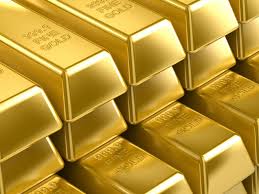 The reason is that the four numbers that make up the current price of gold (which could be $1235 for example) provides such a huge perspective on the state of the entire financial world for the following reasons:
The reason is that the four numbers that make up the current price of gold (which could be $1235 for example) provides such a huge perspective on the state of the entire financial world for the following reasons:
- Due to the way that gold traders around the world think collectively, when the price of gold increases, the US dollar typically loses value. Likewise, when the price of gold falls, this usually accompanies the US dollar increasing in value. .
- Whatever happens to the US dollar, affects the entire global financial system. This is because the US dollar is the world’s reserve currency and the economy of each country across the world is interdependent. To put it another way, like people, countries have their own bank accounts with their savings (reserves) being held in US dollars. And similar to individuals, countries may use their dollar accounts to prove to others that they can pay off their outstanding debts or carry out substantial transactions.
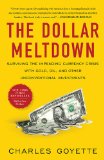
The result is that a good understanding of the movement of the gold price can provide you with an insider’s perspective on current state of the US and the world economy.*
*A historical understanding of the gold price will also furnish you with a deeper outlook on the underlying state of the US and the global financial system. For further information, please click on ‘Protect Yourself Against the Next Financial Crisis!’
In light of the fact that the world economy largely affects, if not governs, the quality of every person’s life on earth, in my view, this type of knowledge should not be ignored or learnt by chance.
Question?
“If you did not read this review, how would you have found out about the importance of commodity trading?
. Whether you are interested in investing, trading, creating a business, or pursuing a career, at the least, you should take a serious look into commodities, especially in terms of buying and selling gold and silver.
No matter whoever we are, the importance of commodities will outlive us all, which makes it something very important to understand and then pass on to others. .
What are Commodities?
Commodities have been vital for the financial progress of people and whole economies since the existence of ancient civilisation.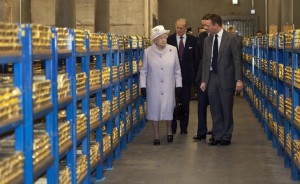
They are the basic building blocks of everything that makes modern day society go around.
This is why, for thousands of years, nations have gone to great trouble to ensure that they own, store, and control them.
In particular, commodities are a group of assets that are based on actual physical goods, which can be broken down into several distinct groups such as
Soft Commodities:
- Corn
- Oats
- Soybeans
Metal Commodities:
- Copper
- Platinum
- Gold
Petroleum Commodities:
- Light Sweet Crude Oil
- Gasoline
- Natural Gas
 If you invest in commodities, you are investing in assets that have their value connected to the price of an actual physical thing.
If you invest in commodities, you are investing in assets that have their value connected to the price of an actual physical thing.
Therefore, if you buy a corn future, for example, its fluctuation in price will be caused by the upward and downward movement of the actual price of a bushel of corn.*
*A corn future is a paper based derivative contract that relates to a commodity, a bushel of corn.
In contrast, other assets such as stock, bonds, or mutual funds do not have a direct relationship with anything tangible. They are based solely on legal contracts with the companies that issue them.
Unfortunately, the chances are that today, you are unlikely to know very much about commodities.
In fact, it is highly likely that you will also continue to lack any real knowledge about commodities in the future, and for this reason, I strongly recommend that you read a book like ‘The Everything Guide to Commodity Trading.’
As will be shown within this review, this text provides a very good introduction into the subject and has been written to serve as a ‘… launching board for your knowledge.’
. How to Invest in Commodities?
As well as there being many different types of commodities, there are also various ways that you can invest and trade them. The most common ways are to
- Buy and own the actual physical commodity
- Invest and trade them through an electronic exchange
- Buy and sell (i) electronic traded funds (ETFs), (ii) stock in commodity companies, (iii) shares in commodity mutual funds
- Invest in the currencies of commodity producing nations
Due to the fact that there are numerous methods to trade and invest in commodities, it is highly likely that you will find an approach that best suits your strengths, interests, opportunities.
Once you have chosen a way, you should then move on to learn how to conduct fundamental and technical analysis.
Significantly, many of the world’s professional traders carry out fundamental and technical analysis in order to invest or trade commodities profitably.
What is Fundamental Analysis?
Fundamental analysis is the study of the big picture in relation to an investment. It involves using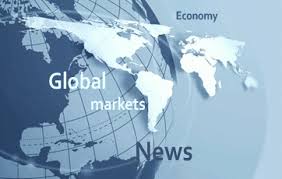
- Financial and economic data to predict the price movement of a commodity
- A timeframe of usually about 2 to 3 months in the short term
- A timeframe of usually about 5 to 7 years in the long term
In spite of the above, there are some traders, who have super-short time frames of days or even hours.
Where to Get Fundamental Analysis From?
The best place to get information for fundamental analysis is from public and private websites.
- Public sites consists of information from free access websites like those created by the world’s central banks such as the Bank of England, and the Federal Reserve.
- Private websites consists of market reports from brokers; however, many brokers may require you to open a trading account before you can get access to their reports.
Building skill in trading or buying a commodity is dependent on getting a feel for its price. Therefore, information is essential.
To get to know the market for your commodity, you will need to
- Access up-to-date information
- Know where to look for data
- Preferably setup an online demo account or portfolio to get specific information about what you want to trade
In terms of studying the big picture, typically you will have to look at
- The cash-flow of a country or countries
- The growth production development within a growing country or countries
- The economy of a country or the world as a whole
- Individual companies
- The world’s consumption of raw materials
Once you have a macro-perspective in regards to the commodity that you are interested in trading, you should then move on to carry out technical analysis.
The theory is that technical analysis will allow you to determine precisely when the best time will be to buy and sell a commodity.
Moreover, it is believed that combining fundamental and technical analyses can lead you to create a very powerful trading system.
What is Technical Analysis?
In contrast to fundamental analysis, professional traders use technical analysis usually for the short term such as a week or less.
Technical analysis is about obtaining technical information whether with the use of statistics, mathematics, charts, or regression analysis.
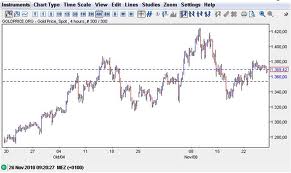 The idea behind technical analysis is that a trader should be able to determine when the best time will be to buy and sell a commodity by studying the mathematical trends that appear on trading charts.
The idea behind technical analysis is that a trader should be able to determine when the best time will be to buy and sell a commodity by studying the mathematical trends that appear on trading charts.
These trading charts* display the commodity’s current and past prices. As a result, traders use the charts to predict the future price movement of the commodity that they are interested in buying or selling.
*If you click on www.goldprice.org, for example, this website will provide you with charts of the past and current price of an ounce of gold.
Usually, before you can carry out technical analysis, you will need to open up an account with an online trading broker.
This account will allow you to use software that is part of the broker’s trading platform.
Using the broker’s software, you will be able to look at the relevant charts for your commodity, and then be able to draw lines and mark dates that you believe are statistically important.
With these lines or dates, you will then be able to mark points on the chart where you intend to buy or sell your commodity profitably.
Ultimately, drawing and marking these lines and dates can be quite easy, but to interpret them effectively will involve a bit of learning.*
If you are buying a commodity electronically then you can set your trading software to automatically buy or sell at the points you have decided are significant.
Alternatively, if you are physically buying and accumulating a commodity then you can use the trading chart as a guide as to when you should buy or sell using a dealer.
 *Many of the world’s professional traders are also professional technical analysts. To learn more, please click on the International Federation of Technical Analysts (IFTA) website (www.ifta.org/certifications/financial) for further information about their self-study courses.
*Many of the world’s professional traders are also professional technical analysts. To learn more, please click on the International Federation of Technical Analysts (IFTA) website (www.ifta.org/certifications/financial) for further information about their self-study courses.
On the other hand, I would encourage you to learn technical analysis by using rapid skill acquisition techniques and strategies. Rapid skill acquisition will allow you to make significant progress with only 20 hours of learning, which is roughly a month’s work. For specific details, please read the book ‘The First 20 Hours’ written by Josh Kaufman.
Please look out for further updates in relation to this review.
Until the next time… practice what you preach!
Tom